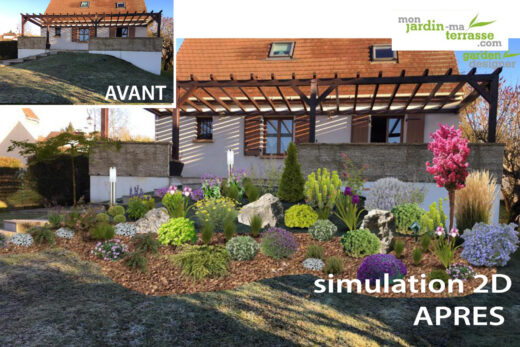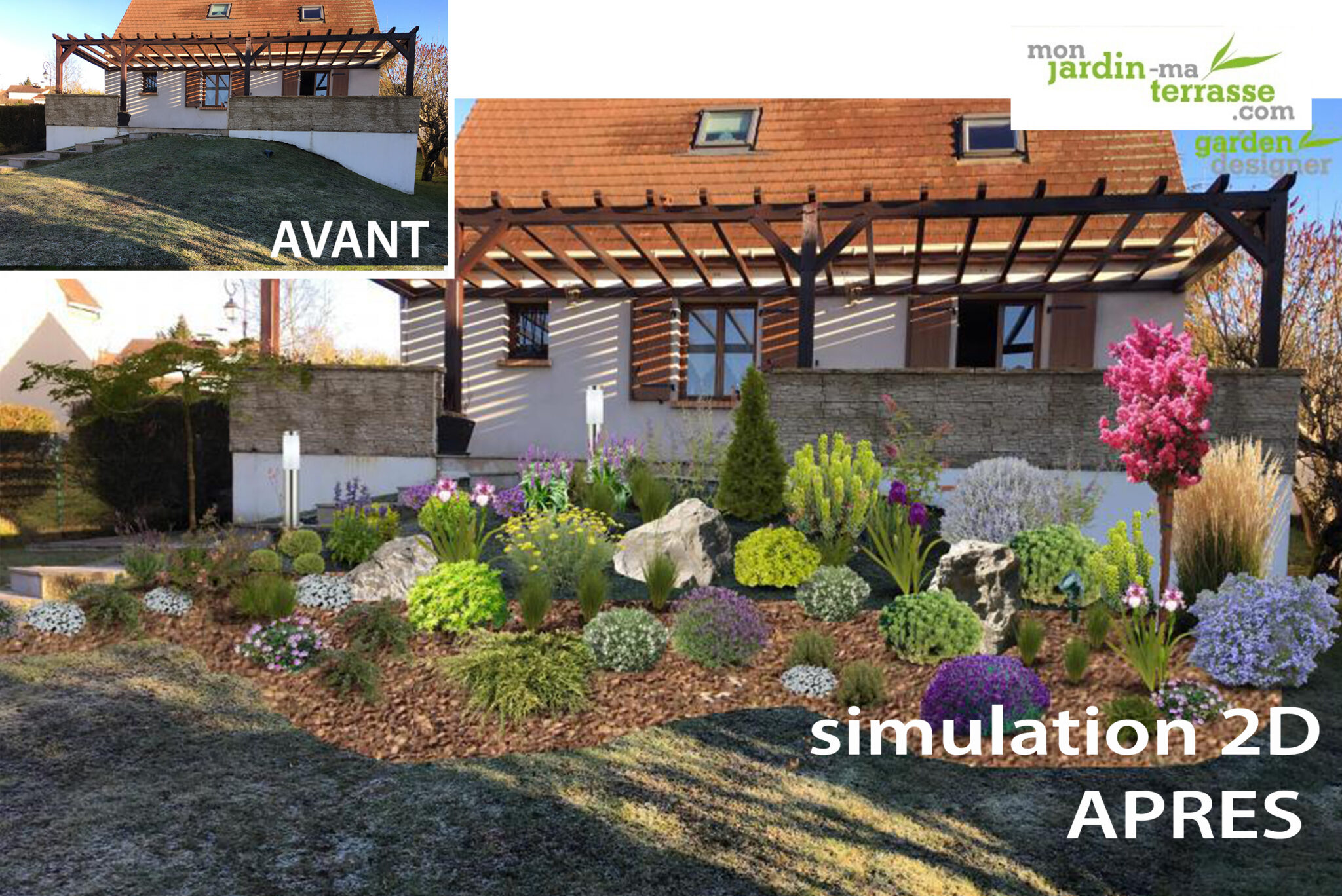
Creating a bed on an embankment is not an easy task, as the choice of plants must be judicious: exposure, soil, size, water requirements… The easiest thing to do is run a simulation before rushing to the garden centre to buy plants you’ve fallen in love with, but which won’t be suitable for the embankment to be landscaped.

In fact, our ingenious site will suggest the plants best suited to your environment (automatically determined using the project address) and exposure that you have previously entered.
Then, we recommend that you add height to your embankment or mound with small trees or shrubs of around 3m in height, to give structure to the area by positioning them judiciously. Don’t forget to take advantage of the opportunity to conceal a neighbouring building.
Then place bushes at its base to fill the space and set the tone for the shapes, colors and ambience (French, natural, English, contemporary…) of the bed. Try to group them and repeat them in odd numbers (except for a formal garden). Choose creeping plants that will occupy the space and prevent weeds from growing.
Finally, add perennials that will bring flowers in succession throughout the year.
We’re not big fans of synthetic mulch cloths, which can’t be camouflaged on an embankment because, being very smooth, they slide around and nothing stays on them. Try coconut or hemp mulch, which will degrade as the plants settle in.
Once you’ve completed your simulation, all you have to do is choose the pre-selected plants you’re going to plant at the nursery. At the end of the process, you can print out a list of the plants to be planted in your slope bed, along with a planting plan.
